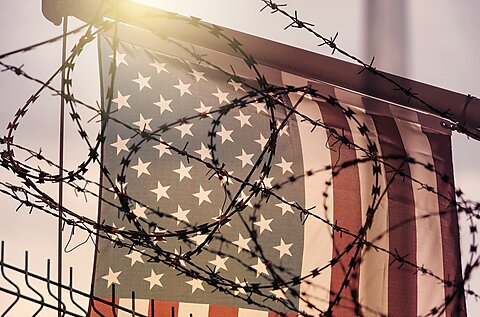
New Data: Criminal Crossings Reached Record Highs in 2020
Customs and Border Protection’s website shows a decline in Border Patrol arrests of convicted criminals in fiscal year 2020 followed by increases in FY 2021 and FY 2022. Many people cite these statistics as evidence that President Biden’s policies have caused a surge in convicted criminals crossing the border. But the 2020 decline never happened. In fact, the spike in criminal arrests started in 2020, and criminal arrests have trended downward under the Biden administration.
More complete CBP data obtained via Freedom of Information Act (FOIA) requests show that CBP’s webpage excludes all criminals arrested under Title 42 (health law). The number of criminals “apprehended” under Title 8 (immigration law) went down in 2020 simply because those people were now being arrested under a different statute, not because they stopped coming. Biden’s policies did not cause a spike in criminal migration. In fact, President Trump’s invocation of Title 42 appears to have caused an increase that escalated to the highest level on record to that point of 2,366 convicts by December 2020.
The daily data show that criminals took a few weeks to realize that Title 42 had brought with it a new paradigm where the probability of criminal prosecution for illegal entry (or reentry) had declined substantially for people with other criminal convictions, but by the summer of 2020, the number of criminals arrested was already substantially higher than previously. In October, the numbers arrested soared to previously unseen highs. December 7, 2020 might be a day that will live in infamy as the all‐time daily record for criminal arrests.
One reason for the increase might be that Title 42 substantially reduced the likelihood of criminal prosecution for people with prior criminal convictions. The probability that Border Patrol would refer someone with a criminal conviction for further criminal prosecution fell from 60 percent in February 2020 (which was already down from a high of 78 percent in June 2018 to 12 percent in one month. Although prosecutions increased toward the end of 2020, they failed to keep up with the new arrivals. The lack of criminal prosecution came in addition to Title 42’s fast‐release policy that put people back into Mexico within hours rather than days. Learning about this new dynamic likely led to more attempts to cross illegally by criminals.
President Trump’s immigration policies were not bad for criminal immigrants. His immigration policies backfired and created incentives for criminals to cross illegally. The former president preferred to spend $15 billion on a border wall than to pay to prosecute criminals. In 2018, his administration prioritized prosecuting asylum‐seeking parents with children over sex offenders and human traffickers. Border Patrol agents said that during family separation, they were being forced into “sending the really bad guys back without prosecution. We are learning after the fact that, for instance, sex offenders were released.”
Despite the uptick, it is important to note that criminals made up just 0.7 percent of Border Patrol’s 2023 arrests. Moreover, although some serious criminals do attempt to enter illegally, nearly half of the convictions reported by CBP were for illegal entry or reentry into the United States. Only 8 percent were for assault, battery, domestic violence, sex offenses, and homicide. Regardless, Border Patrol spends far too much time arresting and detaining peaceful people who otherwise would like to contribute to this country. A better legal immigration policy would let Border Patrol focus on real threats to Americans.



